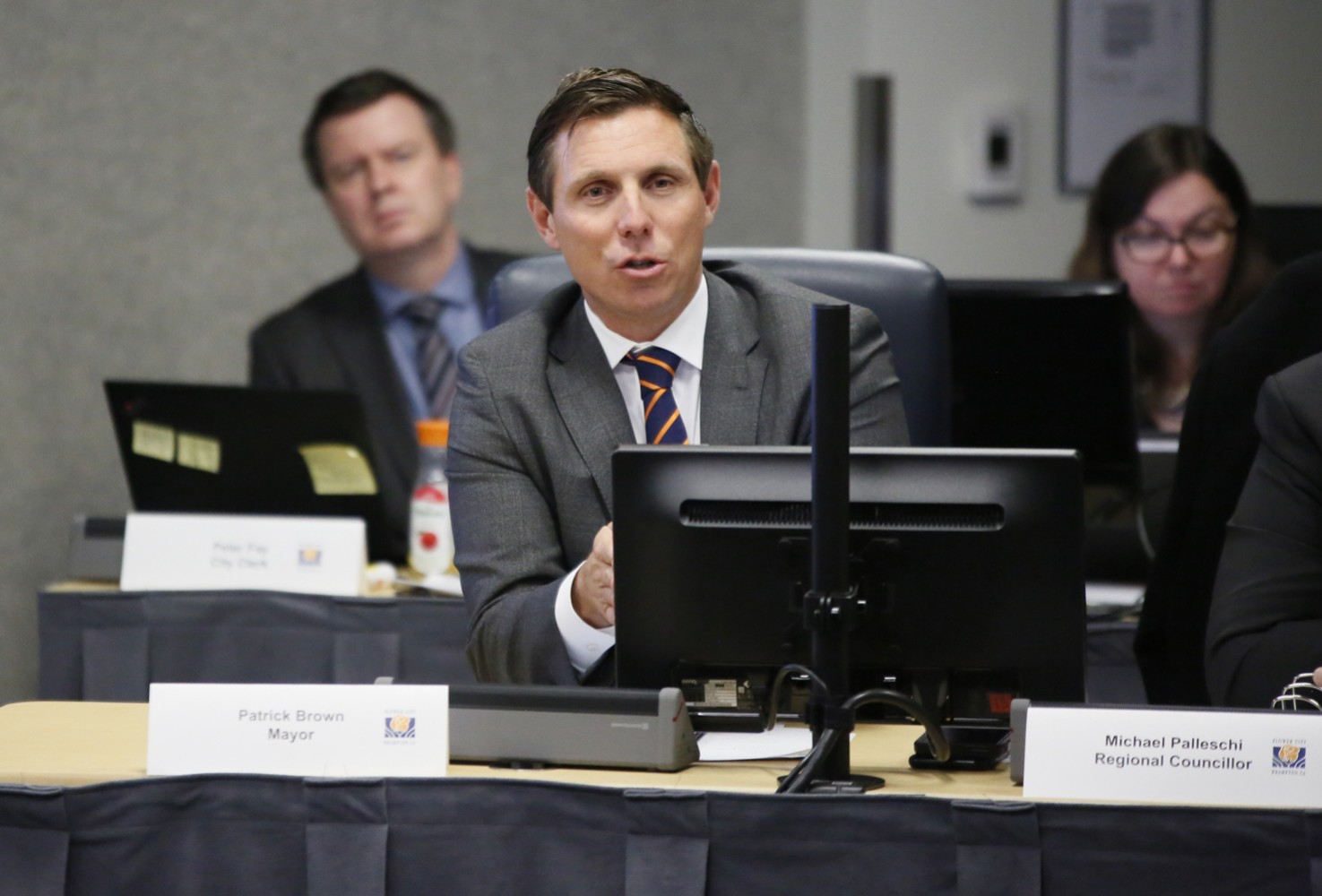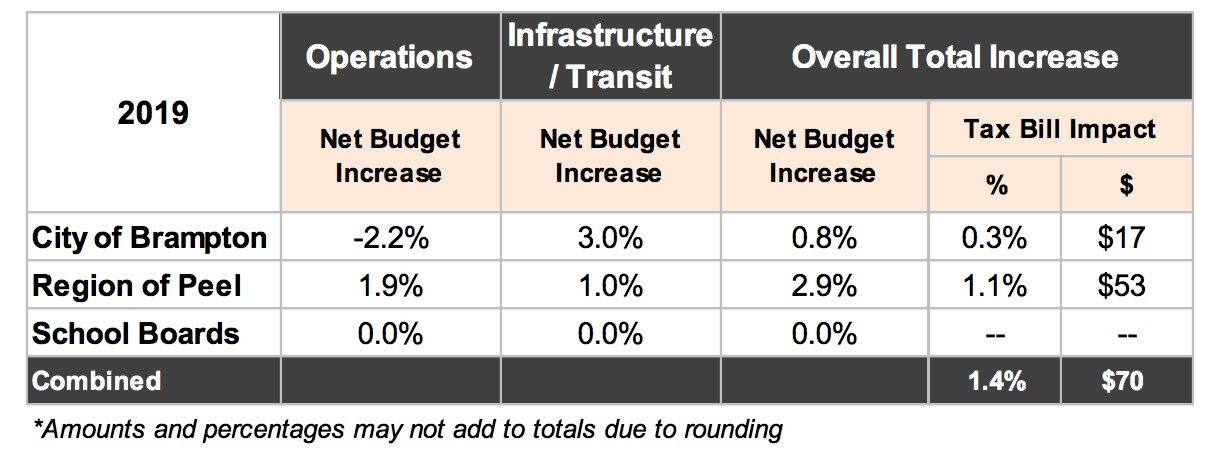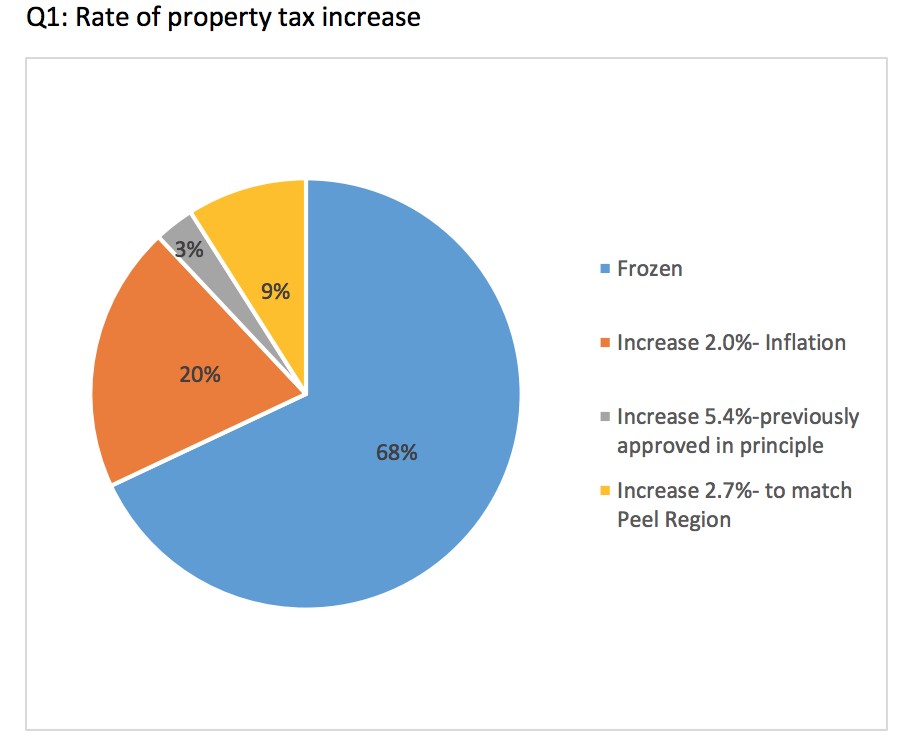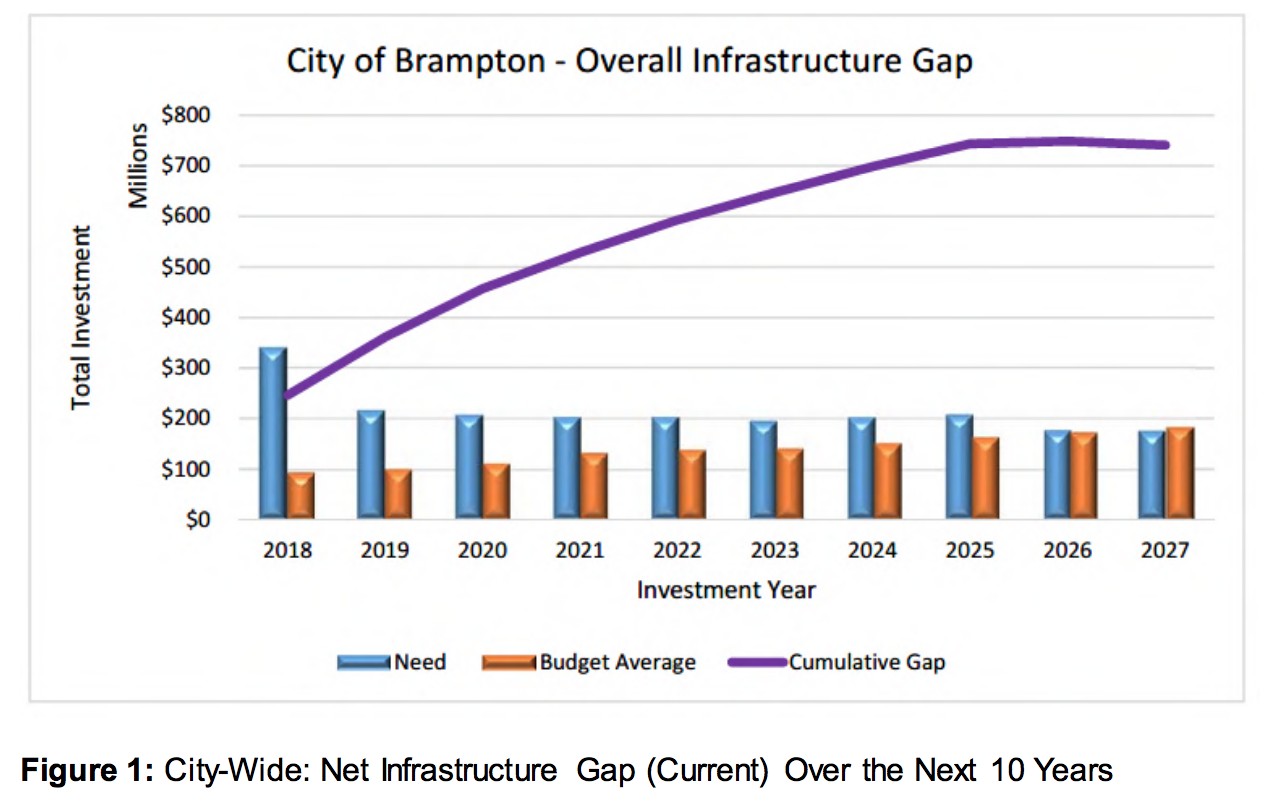
Brown says residents want “out-of-control tax increases reined in”: 0.8 percent raise proposed
The words “tax freeze” will warm the heart of many a taxpayer in Brampton, where municipal rates have spiralled upward in recent years, reaching some of the highest levels in the GTA.
A vow to change this upward trajectory played a large part in Patrick Brown’s mayoral victory this past October.
The 2019-2021 budget documents released on the city’s webpage Monday reveal that staff is now proposing one of the lowest property tax increases in nearly 20 years. The suggested 0.8 percent hike in the city’s portion of the bill isn’t quite a freeze, but it’s close, and when combined with the region and education portions, the cumulative 1.4 percent increase would boost the average tax bill by only $70.

A tax freeze can look good on paper and be celebrated by residents who get that hit of satisfaction when they open their tax bills to see the same figure as the year before, but it also means doing without some important things the extra money could buy.
In preparation for the budget decision-making process, which unofficially kicked off today, staff undertook a tele town hall to gather resident feedback. Part of that was a poll asking residents what level the property tax increase should be for 2019, and where they thought more money should be allocated.
 The vast majority, 68 percent, called for a tax freeze, while the second largest number of respondents, 20 percent, called for an increase of 2 percent, to match inflation. A much smaller contingent (9 percent) called for an increase of 2.7 percent to match the increase already approved by Peel Region for 2019.
The vast majority, 68 percent, called for a tax freeze, while the second largest number of respondents, 20 percent, called for an increase of 2 percent, to match inflation. A much smaller contingent (9 percent) called for an increase of 2.7 percent to match the increase already approved by Peel Region for 2019.
Only 3 percent of residents were looking for the increase of 5.4 percent approved in principle by the previous council as part of a multi-year budget process. Though that was based on the city’s projected capital and operating costs for the year, 5.4 percent was only a tentative figure, and the current council need not abide by it.
“The community feedback is very clear. They want out-of-control tax increases reined in. We are working very hard to achieve a freeze on the municipal portion of the property tax bill,” Mayor Brown said.
But what does keeping revenue lower mean for the future of important initiatives in Brampton?
Though it’s early in the council term, residents have been reminded often how things can change at the municipal level.
In less than four months, a university campus has been cancelled, a major downtown revitalization has been put on the back burner, the route for the future LRT has returned to the Main Street alignment, and six major staff members at city hall, including the city’s top bureaucrat, have been shown the door.
All of these items create big question marks for the upcoming budget discussion, and that’s leaving aside big future questions: the need for additional funding to make improvements in transit, healthcare, and infrastructure items recommended in the approved Brampton 2040 Vision.
Most recently, a group has come forward with a pitch to create the Institute for a Sustainable Brampton (ISB), part of a series of recommendations in the 2040 document related to making Brampton more environmentally-friendly. The ISB would require startup funding to get off the ground. If a zero percent increase is approved, that money would need to be found somewhere within the existing budget, which usually means something else has got to give.
City staff leaders have been recommending for years that Brampton look for new sources of revenue. In his written remarks for the 2018-2020 budget, city treasurer David Sutton noted that more revenue outside the property tax base would be needed to deal with the city’s infrastructure gap and other pressing issues.
Brampton is currently behind on crucial infrastructure improvements by about $246 million. That large sum is expected to more than triple by 2027, surging to $743 million if annual investment remains the same.
“We almost have a ticking time bomb here,” Councillor Paul Vicente has said. “This is something that I think this city really needs to keep its eye on.”

Brampton has already implemented an infrastructure levy to mitigate the problem, collecting more dollars from taxpayers dedicated specifically for infrastructure improvements. But the bottom line for homeowners is that the levy is window dressing for an additional tax on top of normal annual increases.
To date, staffers have put forward reports that don’t align with Brown’s ambition to freeze taxes. They estimate that an annual levy of 5.9 percent will be needed to eliminate the cumulative infrastructure gap by 2027.
If Brown moves forward with a zero increase, it will mean kicking that can further down the road, while more and more projects are added to the "deferred list" and aging infrastructure continues to crumble. That is, unless he and the new council can find significant efficiencies.
One project that has already hit a wall financially is the Downtown Reimagined streetscape improvement plan, which was supposed to be completed in conjunction with significant infrastructure improvements, specifically water and sewer pipe replacements, by Peel Region.
The project will enhance and rehabilitate parts of the city centre at a cost to the city of $45 million or more, depending on how expensive it will be to deal with long-buried 19th-century water channels under the city. The project has been paused because of unforeseen issues with those channels, but the price tag may have been the bigger factor.
Bids for the project came in far above staff projections, including one of more than $70 million, more than twice the estimate. With the latest delay, that number could balloon by the time the critical work is done.
The city’s labour costs, which have repeatedly been cited as too high because of fiscal mismanagement, remain a question mark in the upcoming budget, which calls for growth in the staff complement.
Councillors are no doubt aware that an external audit in 2015 made clear that the pathway to meaningful, sustained savings is to dramatically trim the city's bloated staffing levels.
Brown has already called for an external audit by KPMG that might lead to the type of belt-tightening that would help put the city on the right course.
Beyond out of whack labour costs, which, as of the 2015 audit, were eating up almost 95 percent of the increased revenues from growth, some of the blame could be placed on irresponsible planning and investment.
The city’s proposed three-year budget for 2018-2020 included a $16.5-million increase in the operating budget (about 58 percent of which goes to salaries and employee benefits) for 2018. It would require a $24.6-million increase for 2019 and a nearly $21.9-million increase for 2020.
For the 2018 budget, it was estimated that about 70 percent of the city’s revenues would come from property taxes and 24 percent from user fees — a figure that puts a far higher burden on property taxpayers than some other cities, particularly Toronto.
On average, 41 percent of a Peel resident's property tax bill goes to the Region, 39 percent to the local municipality, and 20 percent to the province for education.
The proposed City of Brampton portion of the multi-year budget included an $80 million increase in the capital budget, from $258 million in 2018 to $338 million in 2019. If the city goes forward with its proposed capital budget plan, that would represent a 31 percent increase in the capital budget in 2019 compared to 2018.
It remains to be seen how the city will reconcile its proposed operating and capital budgets for this year if the mayor succeeds in getting his zero tax increase.
Sutton has explained that all city departments are going through their own budget process, while the leadership team is prioritizing budgets and projects, which includes considering recent decisions on major initiatives such as the university campus, LRT, Downtown Reimagined and the Centre for Innovation.
Official deliberations by the budget committee will not begin until March 18 and will probably continue through March 20. Extra days have been allotted in case council needs more time, so deliberations could also be held on March 25 and 26.
The budget is expected to get final approval at a special council meeting set for March 27.
Email: [email protected]
Twitter: @JoeljWittnebel
Submit a correction about this story


